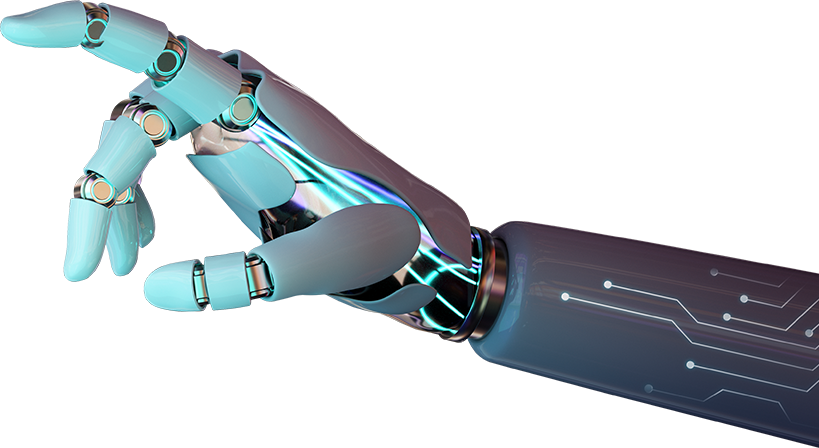In today’s fast-paced tech world, cutting-edge solutions drive innovation. Computer vision applications transform industries, from healthcare to automotive. Eager to explore practical insights? Discover how this technology reshapes our future, offering endless possibilities. Whether you’re a tech enthusiast or a budding professional, this article guides you through real-world examples and case studies. Dive in and see the impact unfold!
Table of contents
ToggleUnderstanding computer vision: a foundational overview
| Concept | Description |
|---|---|
| Image Processing | Manipulating digital images |
| Feature Extraction | Identifying key elements |
| Object Detection | Locating objects within images |
| Machine Learning | Training models for prediction |
Key concepts and technologies
- Image processing and analysis
- Deep learning and neural networks
- Feature extraction techniques
- Object detection and recognition
- Convolutional neural networks (CNNs)
- Augmented reality applications
Understanding these key concepts in computer vision allows you to unlock its full potential. Technologies like deep learning and CNNs drive advances in object detection and augmented reality.
The importance of computer vision in today’s world
Computer vision reshapes industries by enabling machines to interpret visual data. In healthcare, it enhances diagnostics and patient care. Retail benefits from personalised shopping experiences through advanced image recognition. Autonomous vehicles rely on computer vision for safe navigation. This technology streamlines manufacturing, boosting efficiency and accuracy. Facial recognition strengthens security systems. Its importance in today’s world lies in transforming data into actionable insights, driving innovation and efficiency. Understanding these applications empowers you to harness its potential, opening doors to cutting-edge projects. Embrace computer vision to stay ahead in an ever-evolving tech landscape.
Practical applications of computer vision
Computer vision transforms industries by enhancing efficiency and innovation. In healthcare, it aids in diagnostics and patient monitoring. Retail benefits from personalised shopping experiences through image recognition. Automotive sectors leverage it for autonomous driving. These applications highlight the profound impact of computer vision, demonstrating its ability to solve real-world problems and drive technological advancements.
Computer vision in healthcare
Computer vision reshapes healthcare by enhancing diagnostic accuracy and patient care. It enables computers to interpret and analyse complex medical images swiftly. This technology supports doctors and medical professionals in various ways:
- Automated detection of tumours
- Monitoring patient vitals with precision
- Facilitating early diagnosis of diseases
- Analysing X-rays and MRI scans
- Tracking patient recovery progress
These applications improve efficiency and ensure better health outcomes.
Enhancing retail experiences
Computer vision transforms retail by optimising inventory management and enhancing customer engagement. Stores utilise smart cameras to analyse foot traffic, improving store layouts. Augmented reality apps allow customers to virtually try on clothing, boosting satisfaction. Personalised recommendations become possible through advanced image recognition. These innovations create seamless and engaging shopping experiences.
Automotive innovations and autonomous vehicles
Autonomous vehicles rely on computer vision to navigate safely. Cameras and sensors detect obstacles, road signs, and pedestrians. This technology enables real-time decision-making, enhancing safety and efficiency. Innovations in automotive vision systems reduce human error and improve fuel efficiency. Companies like Tesla and Waymo use deep learning algorithms for complex scenarios. Computer vision in cars revolutionises transport, offering a glimpse into a future where vehicles drive themselves, reshaping urban landscapes and commuting habits.
Case studies: real-world examples of computer vision

In agriculture, computer vision enhances crop monitoring, leading to higher yields. Facial recognition improves security systems by identifying threats swiftly. In manufacturing, it automates quality control, reducing defects and increasing efficiency.
Revolutionising agriculture with computer vision
Farmers now use computer vision applications to analyse crop health, detect pests, and optimise yields. Drones equipped with cameras survey fields, providing real-time data. This technology identifies plant diseases and nutrient deficiencies, ensuring timely interventions. Additionally, AI-driven image processing helps in automating harvesting, reducing labour costs. A case study from the Netherlands shows a 20% increase in tomato production using these methods. Embracing these innovations transforms traditional agriculture, making it more efficient and sustainable.
Improving security systems through facial recognition
Facial recognition transforms security systems by enhancing accuracy and efficiency. It identifies individuals in real-time, offering swift access control and reducing human error. Airports and banks use this technology for seamless identity verification, ensuring safety without compromising speed. Its ability to detect threats rapidly makes it invaluable in public spaces. As data privacy becomes crucial, ethical considerations must guide its implementation, balancing innovation with individual rights. Embrace this tech to revolutionise security measures.
Transforming manufacturing processes
Computer vision revolutionises manufacturing by automating quality control, reducing errors, and boosting efficiency. It enables machines to perform real-time inspections, ensuring precision in product assembly. By integrating machine learning algorithms, manufacturers optimise production lines, leading to cost savings and enhanced productivity.
Getting started with computer vision projects
Embarking on a computer vision project requires the right tools and knowledge. Here’s a quick guide to get you started:
- Choose a suitable programming language
- Utilise open-source libraries like OpenCV
- Access online tutorials and courses
- Experiment with pre-trained models
- Join community forums for support
Starting small ensures you grasp the basics. Gradually, you’ll build confidence and tackle more complex challenges.
Tools and resources for beginners
Démarrer avec des projets de vision par ordinateur peut sembler intimidant, mais des outils et ressources facilitent cette aventure. Voici une liste d’options essentielles pour les débutants :
- OpenCV: Une bibliothèque open-source offrant des modules pour le traitement d’images.
- TensorFlow: Un framework de machine learning qui soutient la vision par ordinateur.
- PyTorch: Connue pour sa flexibilité et sa communauté active.
- Kaggle: Une plateforme pour accéder à des datasets et des tutoriels.
- GitHub: Repositories pour explorer des projets de vision par ordinateur.
Tips for successful implementation
Focus on defining clear objectives for your computer vision applications to ensure alignment with project goals. Start with a small, manageable dataset to train your models effectively. Use open-source libraries like OpenCV or TensorFlow for efficient development. Collaborate with domain experts to refine your algorithms. Continuously test and validate your models to enhance accuracy. Stay informed about the latest advancements to leverage new technologies. Prioritise ethical considerations to avoid biases. Be patient and adaptable; successful implementation often requires iteration and learning.
The future of computer vision
The future of computer vision holds promising advancements with AI integration and real-time processing. Innovations in deep learning and edge computing propel new applications, from smart cities to personalised healthcare. However, ethical considerations and data privacy challenges remain crucial. Embracing these technologies will transform industries, fostering a future where machines enhance human capabilities seamlessly.
Emerging trends and technologies
The world of computer vision continues to evolve with trends such as deep learning and neural networks leading the charge. Enhanced algorithms allow for more precise image recognition, transforming industries from healthcare to retail. Edge computing, by processing data closer to its source, reduces latency and boosts efficiency. Augmented reality applications are redefining user interaction, while advancements in 3D vision expand possibilities in autonomous vehicles. These innovations underscore the importance of staying ahead in this dynamic field.
Potential challenges and ethical considerations
Computer vision faces challenges like data privacy and bias. Ensuring ethical AI involves addressing these issues to build trust. Misuse of surveillance technologies raises concerns about personal freedoms. Developers must prioritise transparency and accountability in their designs.
Common Questions
What are some key technologies in computer vision?
Computer vision relies on machine learning, neural networks, and image processing. These technologies enable computers to interpret and analyse visual data effectively.
How is computer vision transforming healthcare?
In healthcare, computer vision assists in medical imaging, disease detection, and patient monitoring. It enhances diagnostic accuracy and improves patient outcomes.
What role does computer vision play in autonomous vehicles?
Computer vision allows autonomous vehicles to perceive their surroundings. It aids in navigation, obstacle detection, and decision-making, ensuring safe and efficient travel.
What challenges does computer vision face?
Challenges include data privacy concerns, ethical considerations, and the need for vast datasets. Ensuring accuracy and fairness in algorithms remains a priority.






